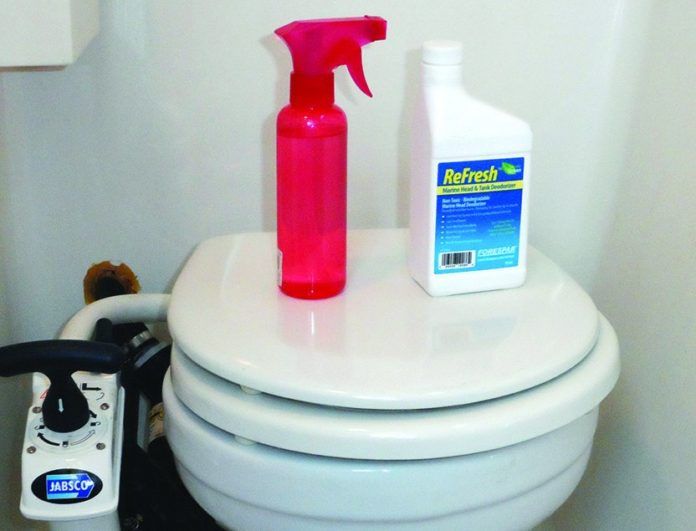Photo by Drew Frye

Your home toilet receives a plentiful washing and a dose of disinfectant every time it is flushed thanks to chlorinated city water piped to our homes. A marine head is different, whether flushed with sea water or fresh water. Flush volume is limited, as we like to stretch pumpouts, and often have to. Inevitably, a few spots and stains are often left behind.
In the case of seawater flush, the water in the intake line and bowl will begin to stink, a result of anaerobic processes converting sulfate in seawater into hydrogen sulfide, resulting in the familiar rotten-egg odor. But no one enjoys scrubbing the head while on holiday, and weve been warned that common grocery-store cleaning products mean death to healthy holding tank bacterial cultures. So what is the solution?
The holding tank treatments themselves hold the key. Our two-part report on holding tank treatments highlighted some very effective products-and some not so effective. One of the better performing additives, Raritan CP (Cleans Potties), contains surfactants, bacterial cultures, and a mild perfume; sprayed in the bowl after each use, it silently eats away and dissolves the mess without user intervention. And since the culture and chemicals are compatible with a bio-augmentation approach to holding tank odor control, any product that is flushed is a benefit, starting treatment at the bowl and cleaning the entire system.
Will other holding tank treatments that stood out in our two-part report do the same-cleaning the bowl and keeping the head compartment fresh? Yes, at least some have shown they will.
Weve not had time to evaluate all of our recommended holding tank treatments when used in this manner, those that we have tried worked well.
We tested each candidate treatment by diluting about 5:1 with water, placing the mix in a trigger-style spray bottle, and misting the toilet bowl after each use, or at least a few times a day. Could the solution be used at full strength? Perhaps, but we found that unnecessary.
Avoid bacterial cultures; while they may be very effective in the tank, we found they start to grow in the sprayer, clogging the nozzle. Raritan CP has formulated a way around this problem apparently; simply follow labeled instruction. Liquid enzyme and nutrient types work, though some were too strongly perfumed for our tastes. We preferred those with a very mild scent. Our favorites to use in the bowl are, in order of personal preference: Raritan CP, Forespar Refresh, Camco TST Ultraconcentrate Citrus, and Thetford Ecosmart. The bowl stays cleaner, and the stink that is all too common when the boat has been closed up for a week will be banished.
For a more comprehensive looks at improving your boats marine sanitation system, our two-part ebook on marine sanitation covers everything from system design to routine maintenance.




































